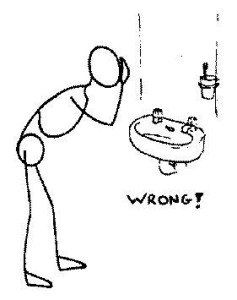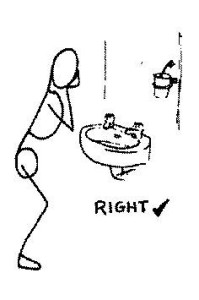An Introduction


- Mr Frederick Matthias Alexander referred to his technique as a re-education of the psycho-physical organism (that which we call ourselves).
When asked to explain what the Technique is, without giving the questioner the experience of an actual “Alexander Lesson” it can be a little difficult, for it is very much experiential. Words and gestures are not enough when it comes to encouraging a person to re-think the way they use their body and mind in relation to “every day” use as well as during work and play. The Technique is pure commonsense when considering maximum efficiency and conserving energy. We stop “doing” and start “allowing.” A naturalness then comes into what we do and how we do it. As the TAO has said “action in non-action,” or perhaps one could say “moving with effort-less effort.”
The Technique is not a therapy and yet it has therapeutic effects. When you consider the body taking its natural length, natural width and moving with a natural grace, then many of today’s psycho-physical problems disappear. Many of the problems caused by compression and restriction are eliminated. One starts to have a different perspective on life. Also the Technique suggests a way of Being, a new approach to what we are doing and how we are doing it, whether we are actors, singers, road sweepers, factory workers or Yoga teachers like myself. All that we do can be approached the Alexander way.
F.M. as he is affectionately called was born in Tasmania in 1869. As a child he had recurring respiratory problems and even though these started to improve around the age of nine, they stayed with him interrupting his life and career until he had perfected his Technique!
His family moved to Australia when he was a young man. Here he studied music and drama, teaching himself to play the violin. He also had a great interest in horses, training and managing them and of course betting on them! He started his own Amateur Dramatic Society and to support this and his own career, he (like many other young actors) took on a variety of supplementary jobs. In his early twenties he decided to devote himself entirely to acting and reciting, giving concerts and producing plays. He would give one man shows which would be both dramatic and humorous, always including Shakespearian pieces.
Unfortunately, his respiratory problems and hoarseness and sometimes a complete loss of voice interrupted his career many times and eventually became so bad that he had to stop and take a good look at what he was doing and how he was doing it. The Doctors and Specialists could find no answer to his problem but he was a tenacious young man, so with close observation, patience and determination his Technique evolved.
His general, overall health and well-being improved way beyond any expectations he may have had. So much so, his friends and acquaintances wanted to know just how he had managed it, so that they to could improve, not just their health but also their acting ability.
The Technique soon became known to some Doctors who started to refer some of their patients to him. He became quite famous in Australia both for his acting and the benefits of his Technique. In 1905 he came to England and came to be equally well known over here, teaching such people as Sir Henry Irving and Bernard Shaw. He also wrote a number of books, including “The Use of The Self.”
Thus he began to train others to become teachers of this Technique in 1930 and now there are over 11,000 teachers throughout the world. When in 1955 he died, he left behind him, a revolutionary way of looking at human functioning. Simply by observing the un-naturalness of our normal movement and correcting it by “inhibition,” or by reflecting prior to making an action, giving “directions” to lengthen, widen and release before moving, the Alexander Teacher can bring about much beneficial change. Whilst it all sounds so simple, it takes time and a number of lessons before a pupil can grasp this concept of “non-doing.”
Once a person has had Alexander lessons, they can take up their full stature and stand correctly. They have a presence, which shows a quiet confidence, where there is no need to raise the voice or make dramatic gestures, for they are in command both of themselves and the situation they find themselves in e.g. the classroom! They have time to think, weigh up the pros and cons, working more efficiently and patiently and not being so tired at the end of the day.
If you are interested in learning more about the Alexander Technique and would like a list of QUALIFIED TEACHERS, please contact:
The Society of Teachers of The Alexander Technique
Also see:
